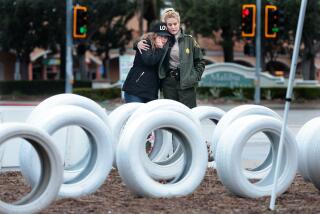Tryout for Toll Roads
- Share via
When Congress overrode President Reagan’s veto of the $87.9-billion federal highway bill, it kept open the possibility that federal highway funds might flow to Orange County to build California’s first toll road. But the road is still a long way from being built.
The next move is up to the California Legislature, which must approve the approach. It is studying two bills, one in the Assembly and one in the Senate, that would give the go-ahead. Then the Orange County Transportation Commission must decide which one of several new freeways, if any, would become a toll road. The most likely candidate right now appears to be the proposed San Joaquin Hills Corridor between Newport Beach and southern Orange County, which is further along in the development process than the proposed Eastern or Foothill corridor.
The major question, however, is still whether county motorists would pay to use a freeway. And the next question is how much. Unlike Easterners, California motorists are not accustomed to paying a toll to use roads, although there is some precedent in the collection of tolls on several bridges in the state--including the bridge between San Diego and Coronado.
One preliminary county study last year indicated that a toll of $1 per car per trip would pay for about 40% of the cost of the Eastern and Foothill corridors. Some transportation officials believe that there might well be enough motorists willing to save time in their daily commutes to justify trying toll roads because, with the federal government providing up to 35% of a toll road’s cost and developer fees providing about 40% or more, the toll could be kept relatively low.
The latest freeway surveys by the Orange County Transportation Commission indicate that most residents believe that adding more freeway lanes and improving surface streets are the best long-range ways to ease traffic congestion in the county. Following those, they favored building new freeways, improving the public bus system and adding more car-pool lanes, although many thought that using flexible work hours might be more effective than car-pooling or buses. There was, however, weak support for paying more taxes for freeway improvements.
The county shouldn’t miss the opportunity to try the toll-road approach. Some county freeways remain unfinished. Others that approach gridlock for several hours each day desperately need widening. And some new ones are needed.
But state and federal revenue sources for freeway construction have been in distressingly short supply in Orange County for years. In the case of the Santa Ana Freeway (Interstate 5), the county was finally able to secure $250 million in state funds to cover what probably will be a $900-million bill for widening the pavement between the San Diego Freeway (Interstate 405) and the Orange-Los Angeles county line. And Orange County voters have demonstrated in an election and in subsequent surveys that they don’t wantto pay more local taxes to fund transportation needs.
A toll road, if the toll were reasonable and there were alternative routes that motorists could use without charge, could be a reasonable compromise. Like gasoline taxes, a toll is a direct user fee. And one of the three proposed new corridors would be an ideal place to road-test the concept.
More to Read
Sign up for Essential California
The most important California stories and recommendations in your inbox every morning.
You may occasionally receive promotional content from the Los Angeles Times.










